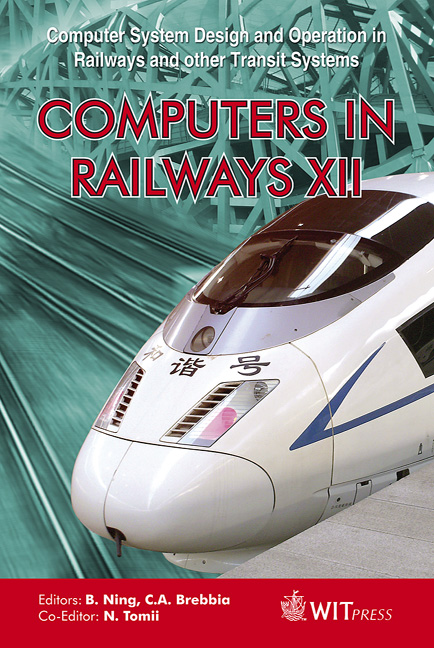Rescue Operations On Dedicated High Speed Railway Lines
Price
Free (open access)
Transaction
Volume
114
Pages
5
Page Range
141 - 145
Published
2010
Size
285 kb
Paper DOI
10.2495/CR100141
Copyright
WIT Press
Author(s)
R. Takagi
Abstract
When disruptions of service take place on dedicated high speed railway lines, it is not uncommon that situations arise in which special \“rescue” operations would be necessary. This paper outlines the following; 1) how such situations take place, or how efforts are being made to avoid them; 2) how rescue operations can be done; and 3) possible research and development on how the situations can be reduced using new technologies. Keywords: rescheduling, rescue operations, high speed railways, substitute train protection, on-board energy storage. 1 Introduction When disruptions of service take place on dedicated high speed railway lines, trains may have to be halted at places where passengers on board the trains cannot evacuate. For example, it has been reported on the Asahi Shimbun [1] that, on 29 January 2010, five trains with approximately 3,100 passengers on board had been stranded for nearly four hours on the Tōkaidō Shinkansen in Japan after a power outage caused by the breakage of an auxiliary messenger wire of the compound overhead line equipment. Earlier, it has been reported on the BBC News Website [2] that five Eurostar trains got stuck inside the Channel Tunnel when exceptional weather conditions caused failures of electrical systems on board trains, with nearly 2,000 passengers having to be rescued in a series of special operations. In this paper, the following will be outlined: 1) how such situations take place, or how efforts are being made to avoid them; 2) how rescue operations are currently carried out and can be done; and 3) possible research and development on how the situations can be reduced using new technologies.
Keywords
rescheduling, rescue operations, high speed railways, substitute train protection, on-board energy storage





